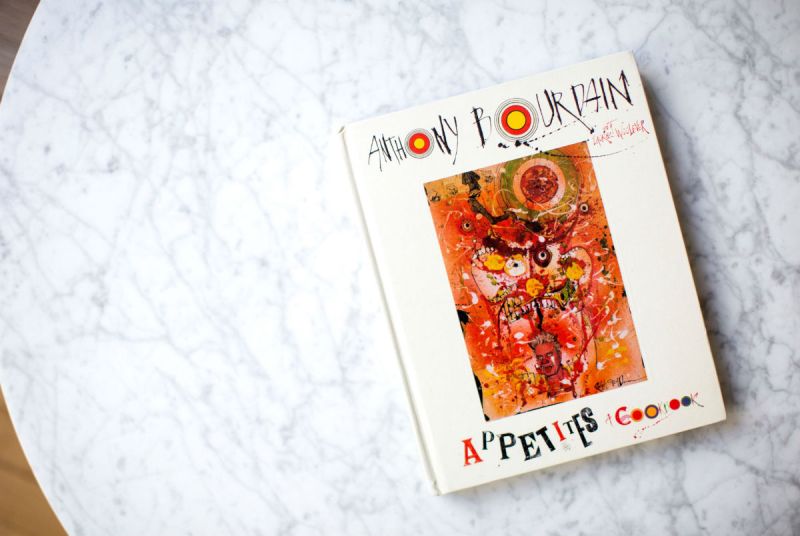
We’ve envied the fact that he gets to travel all over the world, sampling both the best and most bizarre food from places like Tokyo, Spain, Lyon, Thailand, the Philippines, Brazil, Chicago and countless other locations around the globe. But, we’ve often wondered after watching him eat things like warthog anus in Namibia or bún chả in Hanoi, what the heck does that man — who has been cooking professionally for some 40 years — eat at home?
Now, thanks to Appetites: A Cookbook, Bourdain’s first cookbook in a decade, we’ll get to find out how the man who we’ve been watching eat his way around the world on television satiates his appetite in his own home. The intro of the book begins with an essay about his nine-year-old daughter, Ariane, and his martial artist (now ex-) wife. He talks lovingly about his family and the unconventional life they live — Bourdain travels some 250 days a year for his job, so he spends the majority of his time away from home.
In his “family cookbook”, Bourdain goes through the basics of breakfast, starting with scrambled eggs, before moving on to the simple, yet difficult to master — for me, anyway — omelet. Then he goes on to the steps on how to make eggs benedict (don’t forget to toast your English muffins!) and bacon and home-fries before going on to an açai bowl, the trendy breakfast that hails from Brazil.
In the next chapter, Bourdain tells us how to make salads — classics like the caesar salad, a tomato salad, a chicken salad, a tuna salad, and a potato salad. In chapter three, Bourdain goes through soups, the always comforting and soothing dish, especially when you’re sick. In the book, we get a sense of how much Bourdain loves his family, and how, through food, he shows it. What’s most entertaining about the book is that Bourdain’s expletive-filled way of talking shines through in between telling readers his way of cooking at home. We get a sense of who he is, and we can’t wait to try Bourdain’s home cooking in our own homes.
For more information on Appetites: A Cookbook by Anthony Bourdain, visit harpercollins.com.
Editors' Recommendations
- The 11 Best Vegan And Vegetarian Cookbooks
- Anthony Bourdain Honored with Official Food Trail in New Jersey


